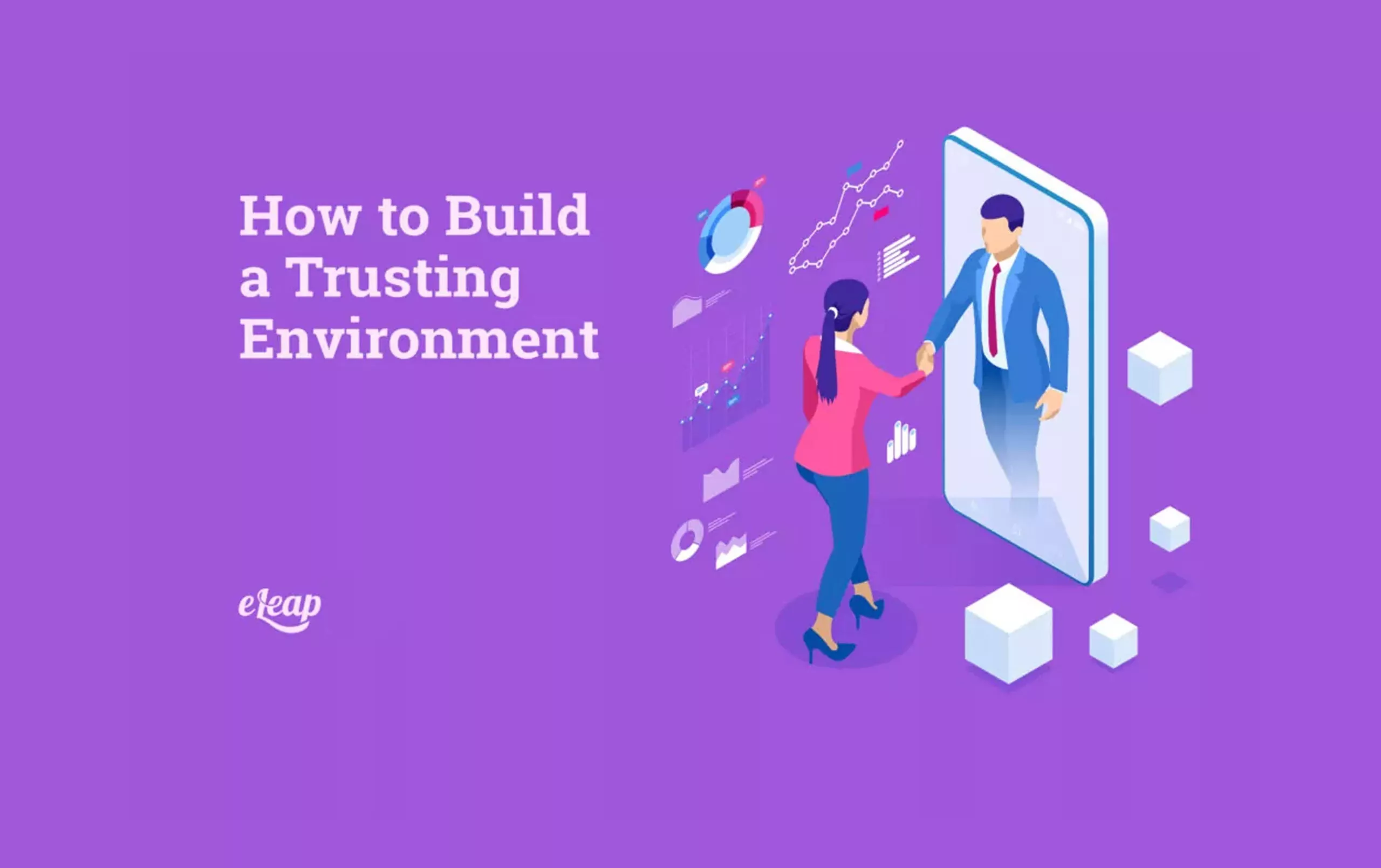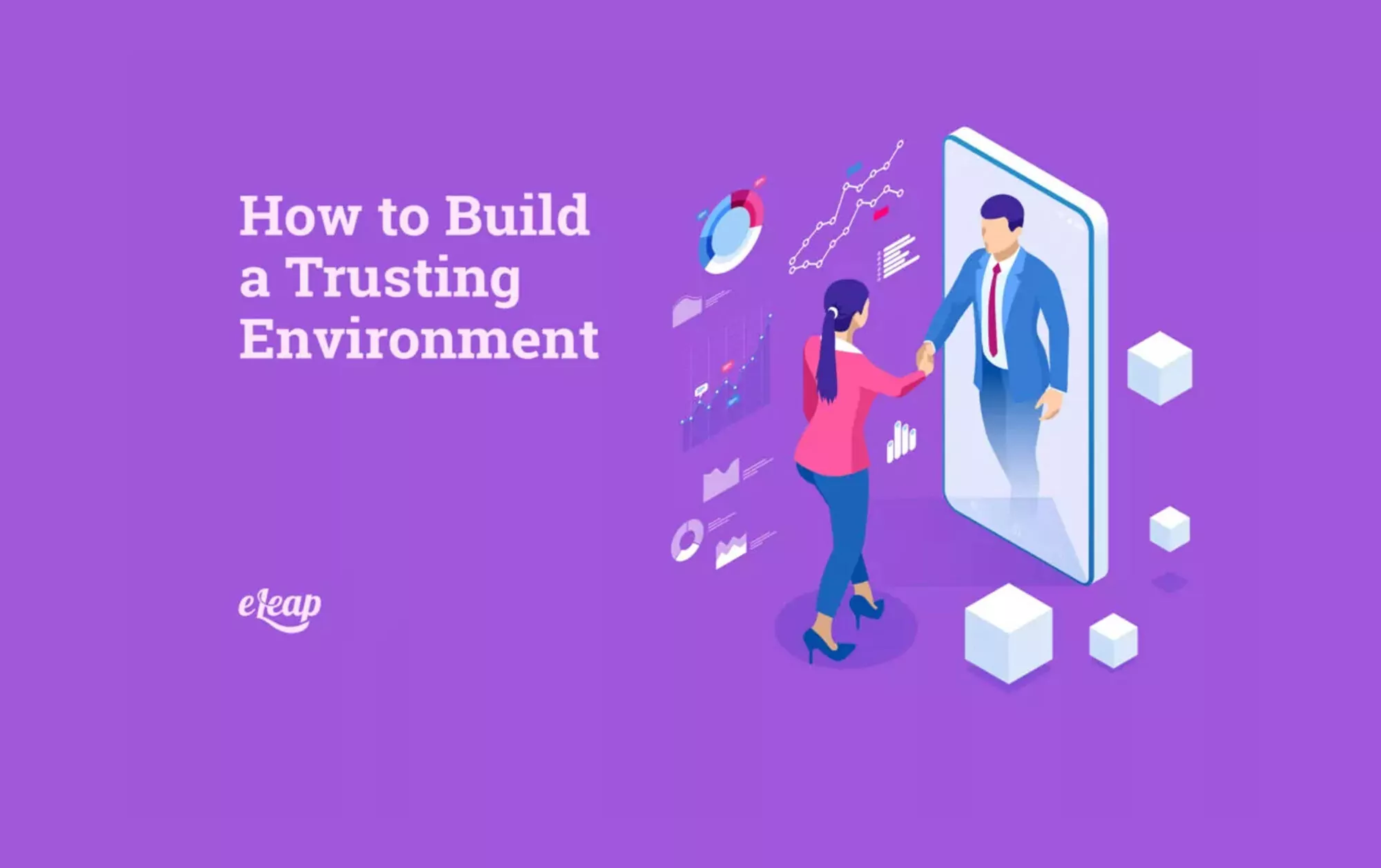How to Build a Trusting Environment

Employees involved in a working environment that is trustful exhibit openness, honesty, empathy, and collaboration. As a result, innovation and productivity are boosted. To build a productive workplace, trust is essential. Trust must be built by understanding how it affects your organization, how it manifests, why it is important, and how to build it. Explore how eLeaP’s Performance Management Platform can simplify evaluations, boost productivity, and drive measurable results.
Trust between partners plays a substantial role in building a trustworthy environment. As we have discussed previously, trust consists of three important factors, known as the Three Ps of Trust. When you partner with someone else, you must work with them to work towards end goals. As much as this sounds easy, it’s hard to pull it off. There are a variety of steps that need to be taken before you can truly build a trusting relationship with your colleagues. Once you have achieved a trusting culture, you are well on your way to creating an environment of trust. Therefore, how do you integrate your team members and employees successfully?
In order to begin building a trustworthy relationship, it’s important that you share your objective and acknowledge the objective of others. For the end goal to be achieved, you need to be able to work together. Now, let’s talk about how you can help create trusting partnerships and an atmosphere of trust.

How to Build Trust
Trust takes time to build, which is a very important factor to keep in mind. It is impossible to rush the process of building trust. But how do you do this? Take a look at some of the steps you can take to create a trusting work environment.
Don’t Force It
Therefore, the strategies must be exposed to the elements in the natural world. Trust is a process that cannot be hurried. It will develop over time. In order to foster a trusting environment, you need to take consistent steps over a long period of time. Trust requires you to build up relationships within the workplace and show that others can rely on you, as well as allow them to show you that they can be relied upon. This won’t happen overnight, so be patient.
Lead by Example
Leading by example is the first step in establishing trust. As a part of that trust-building process, let your teammates, your boss, and your colleagues know you trust them. By modeling the behavior you expect of your team members, you can demonstrate what trust looks like. It is also important to extend trust to others when leading by example. If you want other people to feel comfortable coming to you with their honest opinions, you should extend a trusting hand to them first. Sharing first with them is the best way to start building their trust, not just expecting them to come forward.
Communicate Openly
Transparent communication is essential for trust-building. It is vital that your team engages in honest, meaningful discussions with each other. Transparency is another requirement of communication. By telling people what makes you tick, they can get a better understanding of you. They are able to understand why you are acting the way you are so they can trust you.
Get to Know Each Other
It is important that your team members see their co-workers as individuals, as opposed to simply associates, and communicate with them accordingly. Become more familiar with your team by getting to know them better. Knowing one another and understanding one another will enable them to trust one another more easily. This is a critical part of building personal relationships with your team, and being personable is a strong component of trusting relationships.
Avoid Blame
The practice of pointing fingers and blaming one another for mistakes is a major issue that destroys trust quickly. Previously, we discussed accountability as a critical component of a trustworthy work environment. And being accountable definitely does not mean avoiding blame or pointing the finger at others. When we make mistakes, we should own up to them instead of denying them when we’ve erred. Lack of accountability will quickly cause the breakdown of trust and culture.
Openly Discuss Trust Issues
The first step toward overcoming any trust problems that may exist within your team is identifying what is causing the lack of trust in the first place. Anonymous feedback and questionnaires can be used for this purpose or 360-degree reviews. You can start the process of putting a stop to trust-related issues by identifying where they are.
Listen More
Developing trust doesn’t only happen when you are honest and transparent, but also when you listen to your colleagues. Understanding and truly absorbing what is being said rather than just focusing on how you will respond is the best way to listen. It isn’t useful to ask questions just for the sake of asking them. Asking questions but not listening to (or not considering) the answer is perhaps worse than never asking any questions at all. Without listening, how can you react appropriately to what the other person says or make any changes? Listening to your employees is essential if you want them to continue contributing to conversations.
In the same vein, instead of waiting for an opportunity to ask a question, actively participate in conversations. If you consider what someone else has said, you might even ask a different question than the one you first intended. It can help people trust you more (and begin engaging with you) if you appear to be truly listening.
To create an environment of trust within an organization, one needs to follow several tips and implement important steps. Trust is the foundation of a good work environment. Ensure your goals align with the goals of your employees to ensure you both work toward the same outcome. There may be a long road ahead, but it will be worthwhile. Your organization can quickly start falling apart at the seams without a trusting environment.